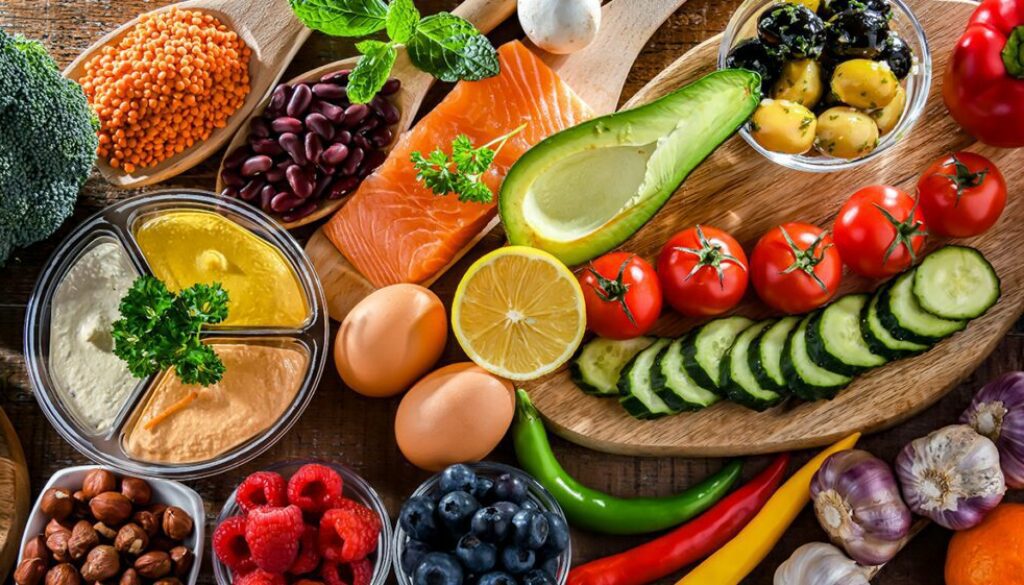The DASH Diet: A Cardiologist-Approved Approach to Manage Hypertension
If you are at risk for heart disease or have been advised to “lower your numbers,” the DASH diet may be the dietary solution you’re looking for. DASH, short for Dietary Approaches to Stop Hypertension, is a well-rounded eating plan that focuses on reducing sodium intake while emphasizing nutrients that help lower blood pressure.
Conway Medical Center’s Chief of Cardiology, Dr. Micheal Odle, resolves that sodium isn’t always the leading cause of high blood pressure. Dr. Odle explains, “As we age, intrinsic stiffness in our arteries affects our blood pressure. Salt plays a modest role, but not a huge role.”
According to Dr. Odle with CMC Cardiology, the DASH diet can be an effective way to manage hypertension.”The DASH diet is reasonable for people with high blood pressure,” he says. “If you follow the DASH diet, you can usually drop your systolic blood pressure, the upper number, by about 5-7 millimeters of mercury.”
What Is the DASH Diet?
The DASH diet is more than just a sodium-restricted diet; it’s a comprehensive approach to healthy eating. Instead of obsessing over food labels and avoiding the salt shaker, the DASH diet encourages you to focus on specific food groups rich in potassium, calcium, magnesium, protein, and fiber. These nutrients work together to help lower blood pressure.
The DASH diet emphasizes vegetables, fruits, whole grains, fat-free or low-fat dairy products, fish, poultry, beans, nuts, and vegetable oils. It limits fatty meats, full-fat dairy products, tropical oils (coconut, palm), sugar-sweetened beverages, and sweets.
What Are the Recommended Servings of the Dash Diet?
The National Heart, Lung and Blood Institute recommends the following daily servings for a 2,000-calorie DASH diet:
- 6-8 servings of grains (e.g., 1 slice of whole-grain bread, 1 oz of dry, whole-grain cereal, ½ cup of cooked rice, pasta, or cereal)
- 6 or fewer servings of meat, poultry, and fish (e.g., 1 oz of cooked lean meat, chicken, or fish, 1 egg)
- 4-5 servings of vegetables (e.g., 1 cup of raw, leafy greens, ½ cup of sliced raw or cooked vegetables)
- 4-5 servings of fruit (e.g., 1 medium apple, ½ cup of peaches or berries)
- 2-3 servings of low or fat-free dairy products (e.g., 1 cup of low-fat yogurt, 1 cup of low-fat milk, 1.5 oz of low-fat cheese)
- 2-3 servings of fats and oils (e.g., 1 teaspoon of vegetable oil, 1 tablespoon of mayonnaise)
- 1,500-2,300 mg of sodium per day (1,500 mg will help lower blood pressure even further)
The DASH diet also recommends weekly servings of nuts, seeds, dry beans, and peas (4-5 servings) and limits sweets to 5 or fewer servings per week.
By following the DASH diet, you can make significant strides in managing your blood pressure and reducing your risk of heart disease and stroke. Rather than a restrictive diet, the DASH approach offers a balanced and sustainable way of eating that can improve your overall heart health.
Conway Medical Center’s State-of-the-Art Heart Care
Advanced medical technology provides the tools our team needs to make an accurate and timely diagnosis. Our board-certified experts at CMC Cardiology will be in your corner, working to ensure your best cardiac health.
For more information about CMC Cardiology or to schedule a consultation, call 843-347-8953.




